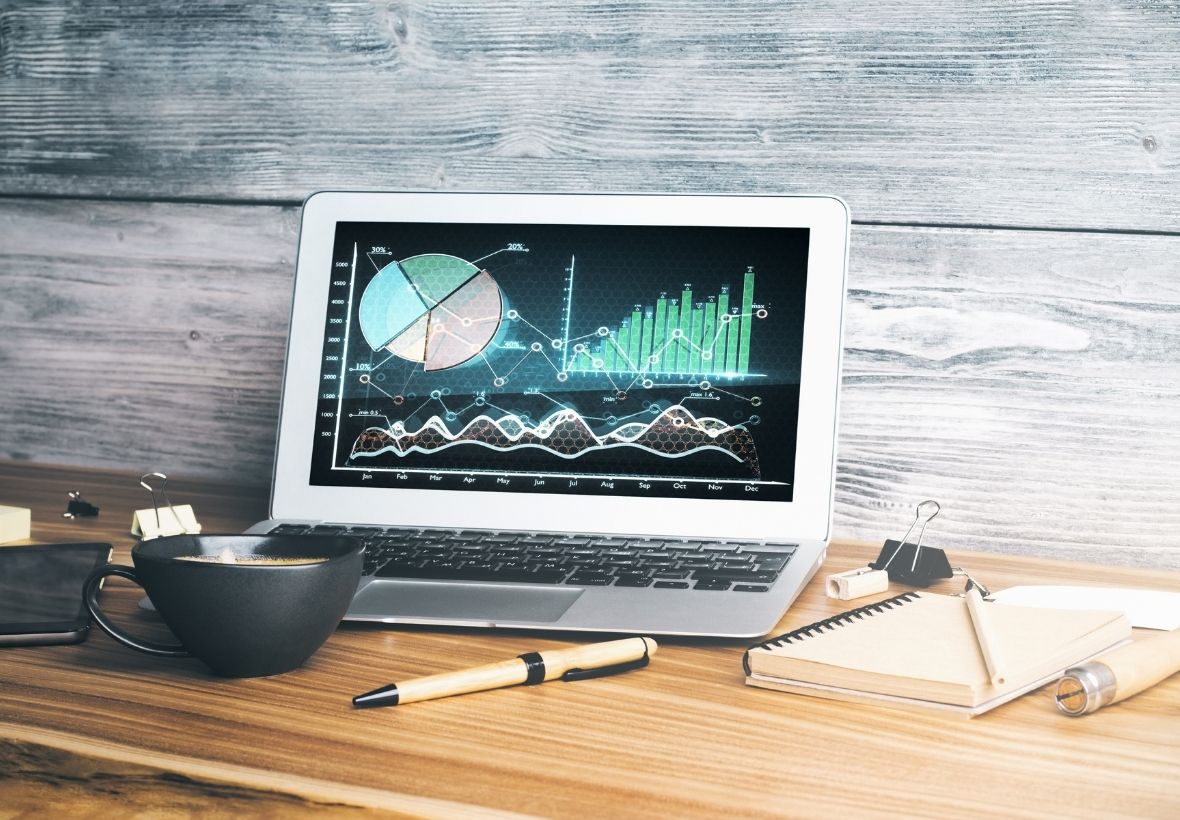The financial industry has witnessed a rapid advancement in technology, particularly in the realm of artificial intelligence (AI). AI trading bots, also known as robo-advisors, have emerged as powerful tools for traders and investors. These sophisticated algorithms analyze vast amounts of data, make predictions, and execute trades autonomously. This article provides a comprehensive overview of AI trading bots, exploring their functionalities, benefits, and impact on the financial markets.
What Are AI Trading Bots?
AI trading bots are computer programs that use artificial intelligence and machine learning techniques to analyze market data, identify patterns, and execute trades in financial markets. These bots automate the trading process, allowing investors to capitalize on market opportunities without the need for constant manual monitoring.
How Do AI Trading Bots Work?
AI trading bots leverage advanced algorithms to collect and analyze vast amounts of financial data, including historical price movements, news, social media sentiment, and other relevant factors. Based on these analyses, the bots generate trading signals and execute buy or sell orders automatically.
Advantages of AI Trading Bots
- Improved Efficiency: AI trading bots can analyze and process large volumes of data within milliseconds, enabling quick decision-making and execution.
- Emotion-Free Trading: Bots eliminate emotional biases and make rational decisions based on predefined parameters and market data.
- 24/7 Market Monitoring: AI bots can operate round the clock, monitoring market conditions and executing trades even when human traders are unavailable.
- Backtesting and Optimization: Bots can backtest trading strategies using historical data, optimizing parameters for better performance.
- Diversification: AI bots can simultaneously monitor multiple markets, assets, and trading strategies, providing diversification benefits to investors.
Limitations of AI Trading Bots
- Lack of Adaptability: AI trading bots rely on predefined algorithms and may struggle to adapt to sudden market changes or unforeseen events.
- Over-Optimization: Excessive optimization based on historical data can lead to overfitting and poor performance in real-time market conditions.
- Technical Dependencies: AI bots are reliant on stable internet connectivity and robust technical infrastructure for seamless operations.
- Regulatory and Legal Risks: The use of AI trading bots may raise concerns regarding compliance with financial regulations and potential legal challenges.
Types of AI Trading Bots
- Trend-Following Bots: These bots aim to identify and capitalize on market trends, buying when prices rise and selling when they fall.
- Mean Reversion Bots: These bots operate on the assumption that asset prices tend to revert to their mean values over time, buying when prices are low and selling when they are high.
- Arbitrage Bots: Arbitrage bots exploit price discrepancies between different markets or exchanges, profiting from the price differentials.
- News-Based Bots: These bots analyze news articles, social media, and other sources to gauge market sentiment and make trading decisions accordingly.
Machine Learning and AI Trading Bots
Machine learning plays a crucial role in the development of AI trading bots. By training algorithms on historical data, bots can learn patterns, detect anomalies, and improve their decision-making capabilities over time. Reinforcement learning, a subset of machine learning, enables bots to learn and adapt to changing market conditions through trial and error.
AI Trading Bots vs. Traditional Trading
AI trading bots differ from traditional trading methods in several ways. Unlike human traders, bots operate based on predefined rules and algorithms, eliminating emotional biases and human errors. Bots can analyze vast amounts of data simultaneously, enabling them to spot trading opportunities more efficiently than humans. However, bots may lack the intuitive decision-making capabilities and adaptability that human traders possess.
Key Components of AI Trading Bots
- Data Collection: Bots gather data from various sources, such as market feeds, news articles, social media, and economic indicators.
- Data Analysis: Bots employ statistical and machine learning techniques to analyze and extract insights from the collected data.
- Signal Generation: Based on the analysis, bots generate trading signals that indicate when to buy or sell assets.
- Trade Execution: Bots execute trades automatically, interfacing with brokerage platforms and placing orders according to predefined parameters.
- Risk Management: Bots incorporate risk management strategies, such as stop-loss orders, to minimize potential losses.
Implementing AI Trading Bots
Implementing AI trading bots requires expertise in software development, data analysis, and trading strategies. Financial institutions and individual traders can either develop their bots in-house or use third-party platforms that provide bot creation and deployment services. It is crucial to thoroughly test and validate bots before deploying them in live trading environments.
Risks and Challenges of AI Trading Bots
Systemic Risks: The widespread use of AI trading bots can contribute to market volatility and systemic risks, especially if bots react similarly to certain market conditions.
Technical Failures: Technical glitches, connectivity issues, or data inaccuracies can lead to unintended consequences and financial losses.
Model Risks: Bots heavily rely on historical data, and if the underlying assumptions of the models are flawed, it can result in poor performance.
Cybersecurity Threats: The increasing reliance on technology exposes AI trading bots to potential cybersecurity breaches and hacking attempts.
Regulation and Ethics
The use of AI trading bots raises important regulatory and ethical considerations. Regulators need to address issues such as transparency, fairness, market manipulation, and the potential impact of bots on market stability. Ethical concerns include the responsibility for bot-generated decisions and the potential for bots to exacerbate market inequalities.
AI Trading Bots in the Stock Market
AI trading bots have gained significant popularity in the stock market. They can swiftly process vast amounts of financial data, analyze company fundamentals, and react to market news, enabling traders to make data-driven investment decisions.
AI Trading Bots in Forex Trading
Forex trading involves complex currency markets with high volatility. AI trading bots can analyze multiple currency pairs, historical patterns, and economic indicators, assisting traders in identifying profitable opportunities and managing risks.
AI Trading Bots in Cryptocurrency
Cryptocurrency markets, known for their volatility and 24/7 operation, are particularly suited for AI trading bots. Bots can analyze vast amounts of cryptocurrency data, detect price patterns, and execute trades across multiple exchanges, optimizing trading strategies in this rapidly evolving market.
Impact on Market Volatility
The increasing prevalence of AI trading bots has raised concerns about their potential impact on market volatility. Bots can swiftly react to market news, triggering large-scale automated trading and exacerbating price movements. This effect can lead to increased market volatility and potential flash crashes.
AI Trading Bots and High-Frequency Trading
High-frequency trading (HFT) relies heavily on AI trading bots due to their ability to analyze vast amounts of data and execute trades within microseconds. HFT bots aim to capitalize on small price discrepancies and market inefficiencies, generating profits through rapid trading.
AI Trading Bots and Risk Management
AI trading bots incorporate risk management techniques to protect investors’ capital. These include setting stop-loss orders, applying position-sizing strategies, and dynamically adjusting trading parameters based on market conditions. Risk management is essential to mitigate potential losses and ensure the longevity of trading strategies.
Successful Strategies for AI Trading Bots
Momentum Trading: Bots can identify and exploit momentum trends in asset prices, buying when prices rise and selling when they fall.
Statistical Arbitrage: Bots leverage statistical models to identify price discrepancies between related assets and execute profitable trades.
Sentiment Analysis: Bots analyze news sentiment, social media trends, and other indicators to gauge market sentiment and make informed trading decisions.
Pattern Recognition: Bots employ machine learning algorithms to detect and capitalize on recurring price patterns and technical indicators.
AI Trading Bots and Behavioral Finance
Behavioral finance examines how human biases and emotions influence financial decisions. AI trading bots can mitigate these biases by making rational decisions based on data analysis and predefined rules. However, it is essential to understand the potential limitations of bots in capturing all aspects of human behavior.
Future Trends in AI Trading Bots
Enhanced Deep Learning: AI trading bots are likely to incorporate more advanced deep learning techniques, enabling them to analyze unstructured data, such as news articles and social media posts.
Explainable AI: As AI trading bots become more prevalent, the demand for transparency and interpretability of their decision-making processes will increase.
Hybrid Approaches: Hybrid models that combine AI trading bots with human intervention and oversight are likely to emerge, leveraging the strengths of both humans and machines.
How to Choose an AI Trading Bot
When selecting an AI trading bot, several factors should be considered, including the bot’s track record, transparency of its underlying algorithms, risk management capabilities, and the provider’s reputation. It is crucial to thoroughly research and test different bots before making a decision.
Common Misconceptions about AI Trading Bots
- AI Trading Bots Always Generate Profits: While AI trading bots can be highly efficient, they are not guaranteed to generate profits in all market conditions.
- Bots Replace Human Traders: AI trading bots complement human traders but do not completely replace them. Human intervention and oversight are still crucial.
- Bots Are Perfect Predictors: AI trading bots rely on historical data and statistical models, and their predictions are subject to inherent uncertainties and limitations.
Case Studies: AI Trading Bots in Action
- Case Study 1: XYZ Hedge Fund increased its returns by 30% by incorporating AI trading bots into their investment strategy.
- Case Study 2: Company ABC successfully implemented an AI trading bot that reduced manual errors and improved trade execution speed.





Leave a Reply